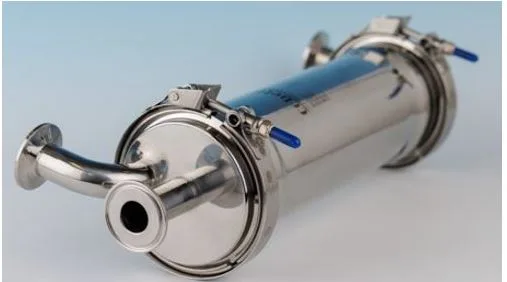From Detroit to Shenzhen: Where the Future of Cars Is Being Built
The car business is at a turning point. For more than a century, Detroit was the heartbeat of the world’s auto industry, giving birth to giants like Ford, General Motors, and Chrysler. A new center of power is emerging thousands of miles away in China, but in the city of Shenzhen, specifically, which is famous for being technology-driven. This is not a geography change—it’s a change of technology, sustainability, and the changing culture of mobility. Detroit still clings to its past and craftsmanship heritage—where you can even find best place to sell classic cars—Shenzhen represents speed, innovation, and the future of electric and autonomous cars.
Detroit: The Legacy Powerhouse
Detroit earned the nickname “Motor City” for good reason. Henry Ford revolutionized the manufacturing process with the assembly line in the early 20th century, producing automobiles affordable for the masses for common Americans. Detroit set car ownership and driving for generations. Ford, GM, and Chrysler were the top dogs as the big three, mass-producing autos, leading global design trends, and establishing car ownership as an American icon.
Yet the history of Detroit has not been smooth. The city went into economic decline towards the close of the 20th century, partly generated by greater foreign competition as well as changing consumer tendencies. Detroit has repositioned itself in more recent years, however. Ford’s $950 million Michigan Central campus investment, GM’s electric-vehicle push with the Chevrolet Silverado EV, and Stellantis’ parent company electrification plans reveal that the city is not simply holding on to its history but trying to reimagine it for the electric age.
Shenzhen: The Tech-Driven Challenger
What was once a fishing village a few decades ago, Shenzhen has become a world-class innovation center today. It is the location of industry titans like Huawei, Tencent, and BYD, China’s biggest electric vehicle producer. Shenzhen streets now throb with wholly electric buses and taxis, and it is the world’s first city to have a 100% electric bus fleet.
BYD, NIO, and XPeng are redefining what a vehicle can do. From smart dashboards that leverage AI assistants to extended-range EV batteries and autonomous tech, Shenzhen companies are leaving their American and European peers in the dust.Backed by strong government support, free-spending subsidies, and hyper-rich battery supply chains, Shenzhen is the testing ground where the mobility future is being driven on an industrial scale.
The Battle for Electric Vehicle Supremacy
At the center of this Shenzhen vs. Detroit story is the battle for control of the EV market. Detroit’s car manufacturers are all-in: GM will go all-electric by 2035, and Ford is producing EVs like the Mustang Mach-E and the F-150 Lightning. But Chinese companies are already ahead of the game on production and adoption.
BYD overtaken Tesla in global sales of EVs in 2023 to prove that China is no longer a follower—China is a leader now. While American automakers are weighed down with supply chains issues, slowing deployment of charging infrastructure, and consumer indecision. As Detroit hanks on quality and tradition, the winning factor in Shenzhen is price, speed of technology innovation, and government-backed mass adoption.
Technology and Connectivity: Cars as Smartphones on Wheels
Perhaps the most glaring difference between Shenzhen and Detroit is how each of these cities thinks about the car. In Detroit, the car continues to be inextricably bound up with identity, lifestyle, and freedom. In Shenzhen, increasingly, they are being thought of as intelligent devices.
Chinese automakers are introducing features that sound more Silicon Valley than Motor City: facial recognition entry, car gaming, AI copilots, and seamless app integration with mobile operating systems. NIO even offers “battery swapping stations,” which allow drivers to exchange dead batteries in minutes instead of recharging. That technology culture is what gives Shenzhen the feel of the Silicon Valley of cars.
Sustainability and Policy: Two Different Paths
The U.S. and China also vary because governments are building the future of automobiles. The Biden administration has implemented incentives like EV tax credits and charging station funding, but pickup has lagged behind expectations. Infrastructure deficits and political opposition remain hurdles.
In contrast, China’s national government has been actively pushing the EV transition. Subsidies, tough emission regulations, and mandates by local governments compelled EV adoption much faster than in much of the Western world. The example of Shenzhen—where nearly all of the vehicles on the road are electric or hybrid cars—illustrates what happens when policy, infrastructure, and industry so nicely converge.
What This Means for Drivers Around the World
To drivers and enthusiasts, there is a challenge but also a chance in this East-West competition. Detroit holds on to the legacy of car culture from muscle cars of the past to premium sedans, while Shenzhen offers a look into tomorrow’s world of autonomous EVs and connected cars. Having these two centers beside each other ensures that world consumers will have an option that ranges from legacy cars to intelligent mobility at the edge.
Interestingly, the same dichotomy accounts for the way people emotionally connect with automobiles. There are some who still treat their automobiles as eternal friends, carefully restoring vintage Mustangs or Corvettes. Others treat them as comfort tools, just as they do with smartphones, in which software updates take precedence over engine roars.
Conclusion: Two Roads Converging
Detroit and Shenzhen may seem like a world apart, but in reality, their fates are converging. Detroit is learning from Shenzhen about speed and rapidity, and Shenzhen is learning from Detroit’s traditions of craftsmanship and safety measures. The global auto industry isn’t the tale of one city overtaking another—it’s about how both will shape the cars of tomorrow.
Ultimately, mobility’s future will be written in both locations: in Detroit’s factories, where a century of history hangs in the air, and in Shenzhen’s laboratories, where engineers create cars that speak, reason, and drive. To drivers, that portends an age when tradition and innovation ride together.





